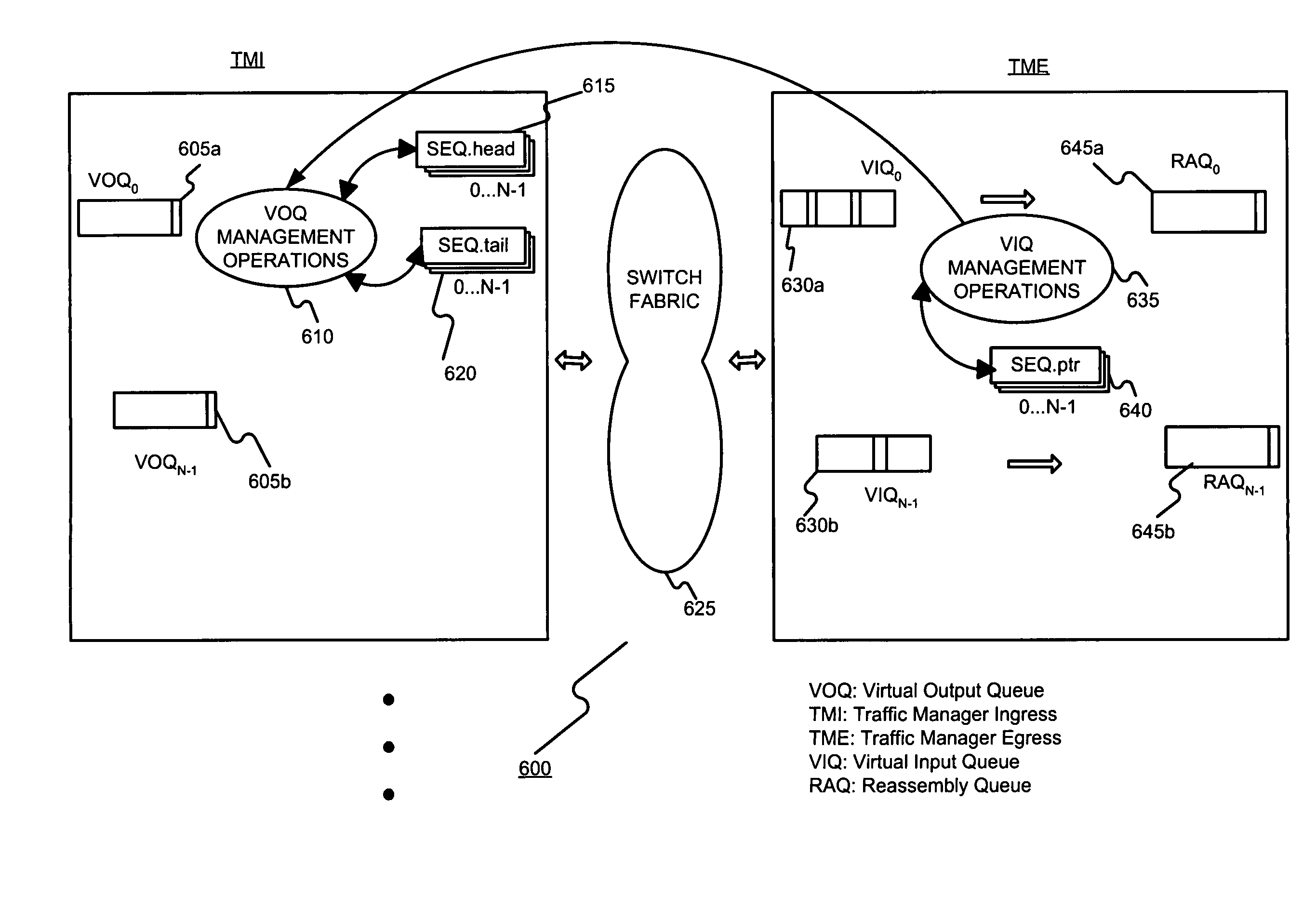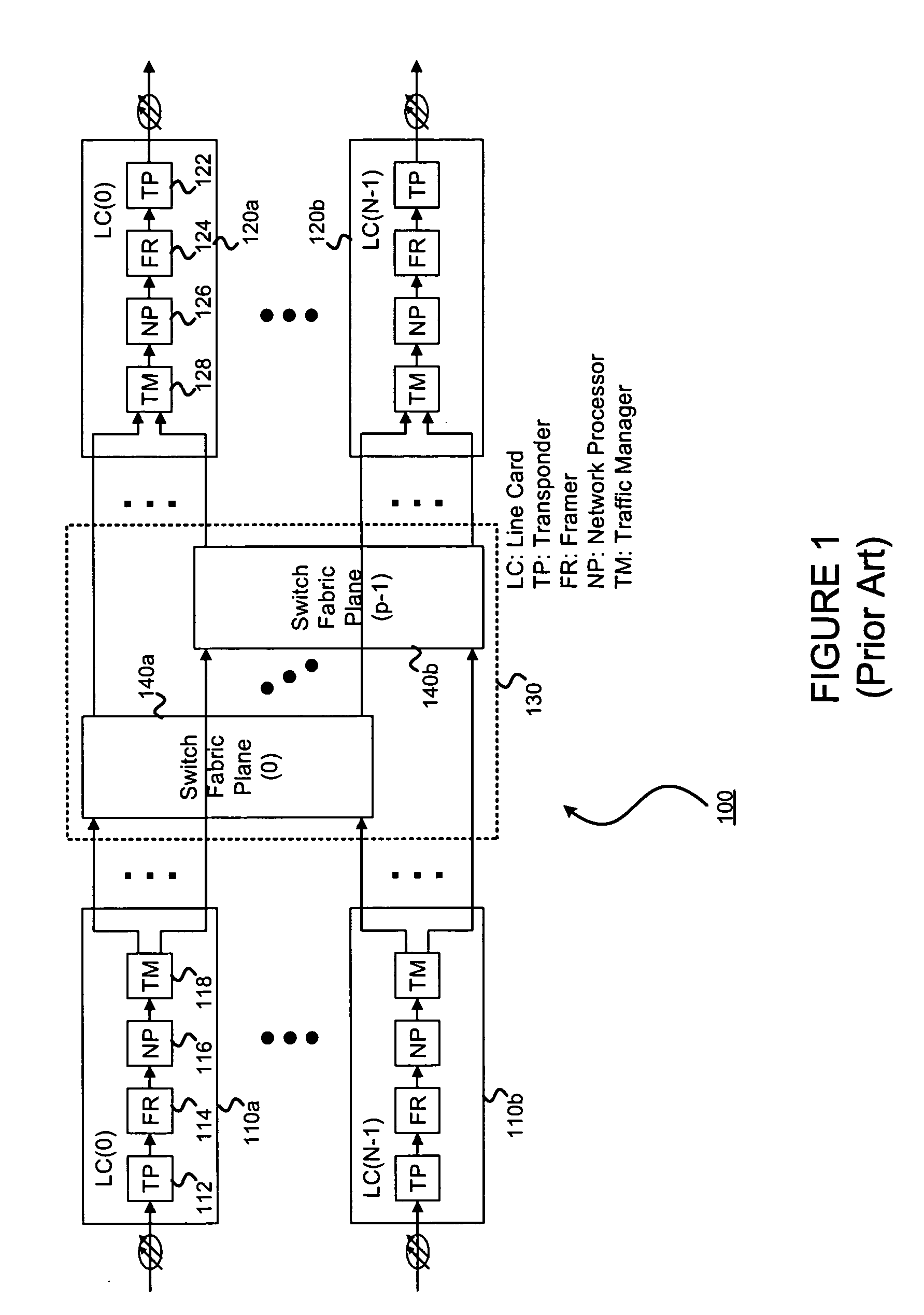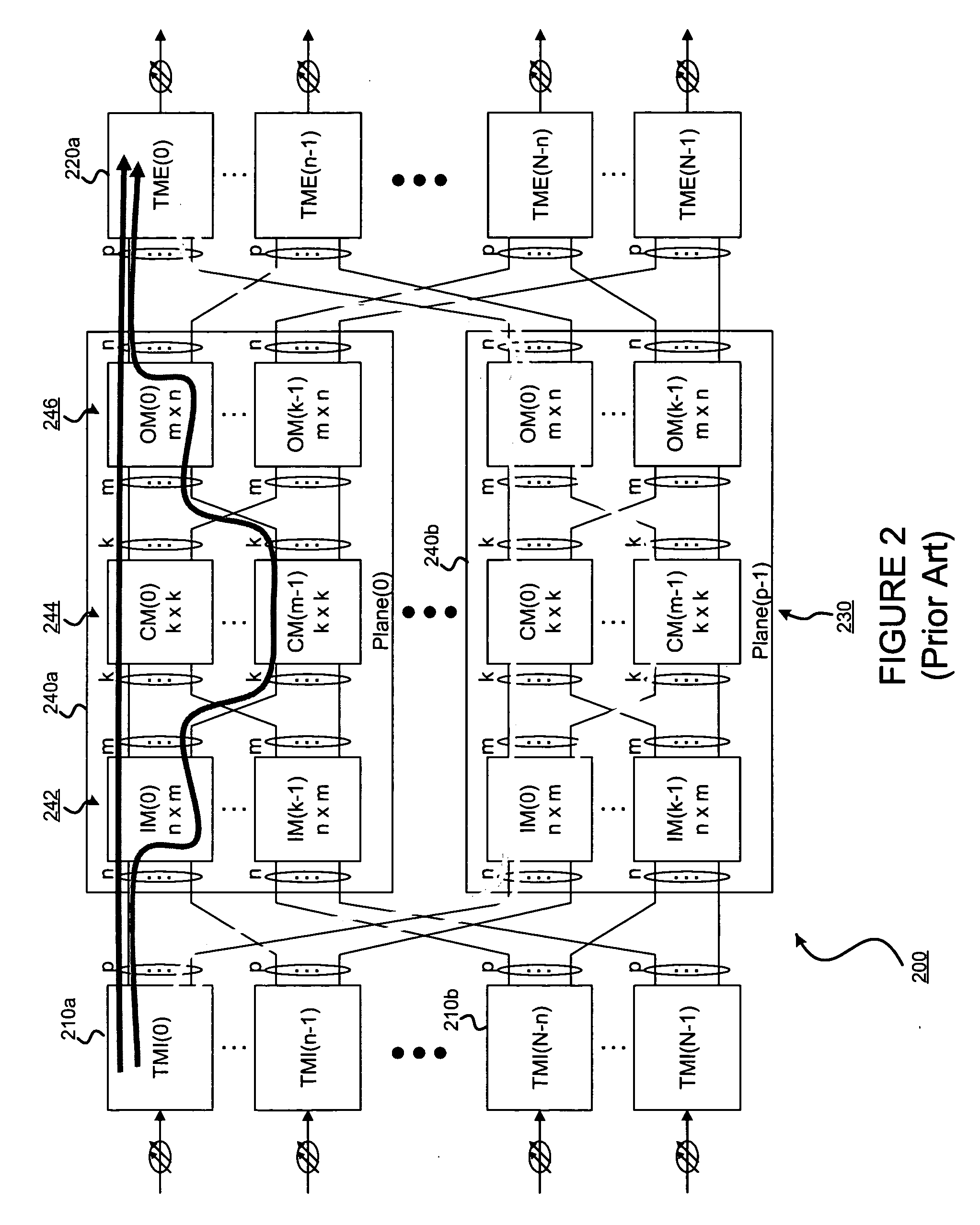Maintaining packet sequence using cell flow control
- Summary
- Abstract
- Description
- Claims
- Application Information
AI Technical Summary
Benefits of technology
Problems solved by technology
Method used
Image
Examples
first embodiment
§ 4.1 First Embodiment
[0045] The invention may be used to control or limit the potential number of out-of-sequence packet cells using a window flow control scheme. By limiting the potential number of out-of-sequence packet cells, re-sequencing queues at egress modules becomes practical. For each input-output pair, an available cell counter (ACC), which is always equal to or less than a window size, is maintained. If the ACC is greater than 0, the input port (in the specification, the input port and TMI are used interchangeably. In the same way, the output port and the TME are used interchangeably) can send a cell. Each time the input port sends a cell, the ACC is decremented (e.g. by one). If the output port receives a cell in order, it sends an acknowledgement (ACK) message (e.g. packet). When the input port receives the ACK packet, it updates the ACC accordingly.
[0046] One way to implement this scheme is described in § 4.1.1 and § 4.1.2 below. The input port maintains an availabl...
second embodiment
§ 4.2 Second Embodiment
[0054] Proper cell ordering may be maintained using a sequence number (SN) for each flow. The SN ranges from 0 to W-1, where W is the window size. Therefore, in this implementation, the number of cells in the switch fabric for a flow cannot exceed W. If there are N input ports and N output ports, the number of flows is N2. Each input port has N VOQs, one per each output port. Each output port also has N VIQs, one per each input port.
[0055] When an input port sends a cell to the switch fabric, it attaches an SN to the cell header. The SN is given by the VOQ manager. The VOQ manager maintains two pointers for each VOQ; a sequence head pointer (SEQ.head) and a sequence tail pointer (SEQ.tail). The SEQ.head is the SN to be attached to the cell sent from the input port. After a cell is sent, the SEQ.head is incremented (e.g., by one).
[0056] When an output port receives a cell, it stores the cell in the appropriate VIQ according to its SN. The output port moves a ...
PUM
 Login to View More
Login to View More Abstract
Description
Claims
Application Information
 Login to View More
Login to View More - R&D
- Intellectual Property
- Life Sciences
- Materials
- Tech Scout
- Unparalleled Data Quality
- Higher Quality Content
- 60% Fewer Hallucinations
Browse by: Latest US Patents, China's latest patents, Technical Efficacy Thesaurus, Application Domain, Technology Topic, Popular Technical Reports.
© 2025 PatSnap. All rights reserved.Legal|Privacy policy|Modern Slavery Act Transparency Statement|Sitemap|About US| Contact US: help@patsnap.com



